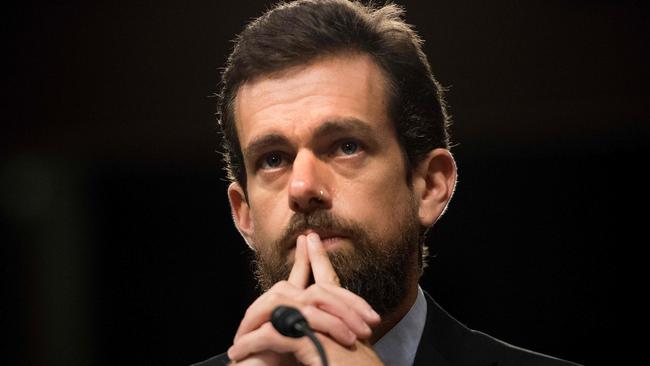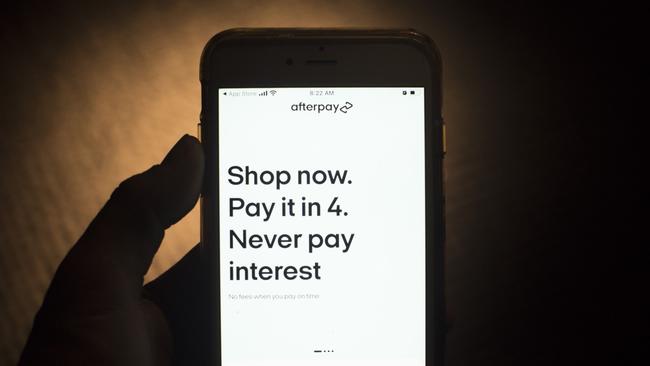
“The valuation is just the amount that someone is willing to pay,” Neumann says ahead of an IPO.
In WeWork’s case the “someone” was private investors, specifically Japanese tech investor SoftBank, pushing the start-up’s valuation to $US47bn ($63.5bn).
For Australia’s Afterpay, which was valued at $39bn in August, the “someone” was Jack Dorsey, the co-founder of Twitter and now head of the payments play now called Block.
The share-based acquisition of Afterpay last August signalled top of the market for buy now, pay later, and had Block investors waited a few months as interest rates started climbing around the world, they would have got a bargain. Rising competition, interest rates and inflation are taking their toll on the one-time darlings.
At the time of the Afterpay deal, the buyout – which was funded by using 0.375 Block shares – was valued at $39bn, marking Australia’s biggest ever M&A deal.

The equivalent transaction today would have valued Afterpay at $18.3bn, as Block’s shares fell more than 56 per cent after it was announced. It is arguable that had the merger been struck a few months later, Block could have used tougher terms, resulting in an even lower valuation.
In February the smaller Zip Co snapped up BNPL rival Sezzle for $491m, struck on numbers nowhere near the lofty Afterpay deal.
Today that all-share Sezzle merger is worth just $239.4m
Updated accounts released by the Wall Street-listed Block in recent days put Afterpay in a different light under its new San Francisco-based owner.
The merger has triggered tougher accounting treatment and forced a string of revaluations. It’s also given an insight into the deepening losses of the BNPL pioneer.
Consolidated accounts show Afterpay delivered a pre-tax loss of $501.9m for the six months to end-December. This compares to a $76.1m pre-tax loss for the same period a year earlier.
Afterpay’s revenue increased 54 per cent during the half to $644.9m. But all the gains in revenue were wiped out by a bigger increase in operating costs, including a more-than-doubling of expenses ($176.7m) for bad debts during the December half.
It’s worth noting for all of last financial year – that is for the entire 12 months – Afterpay took $194.9m in bad debt expenses, showing momentum for lending losses is on the rise.
As interest rates increase rapidly around the world this is going to deliver a twin blow for BNPL. Financing costs and bad debts are set to go up sharply, increasing the cash burn rate of the businesses.

As we’ve written before, one of the major issues with the BNPL model comes down to sustainability: the faster the growth, the bigger the losses become. And Afterpay and its smaller rival Sezzle are the most vulnerable because their revenue mostly relies on merchant fees for revenue.
Comparable rivals Affirm and Klarna generate significant net interest income, which can help them navigate higher rates.
The Block accounts reveal National Australia Bank and Citi have provided the biggest line of credit to Afterpay, with a combined $1.9bn in warehousing facilities in Australia alone to fund its BNPL payments.
In the US Wall Street banks Goldman Sachs and JPMorgan have a combined $1bn. This includes a $266m facility that needs to be rolled over in December. Block was at pains to point out that the unaudited results to end-December were presented for informational purposes only and are not intended to be indicative of the actual financial position of Afterpay.
A different business
But it’s a picture of a very different business from 12 months ago. As long as Block’s shareholders can handle the losses, merging with a pure-play payments business was actually the lifeline that Afterpay needed. The rationale remains to incorporate Afterpay into Block’s Seller and Cash App, essentially becoming the payments link between merchants and consumers. This could ultimately represent bigger value to Block shareholders rather than operating Afterpay as a stand-alone business, but it will require deep pockets.
It’s just as well Jack Dorsey resigned from the microblogging site last November to focus his efforts on Block, which he jointly ran. Otherwise he would have his work cut out fending off a $US43bn takeover approach for Twitter from Tesla founder Elon Musk, rather than bringing Afterpay together. Dorsey remains on the board of Twitter, which is weighing up Musk’s approach.
Brokerage Macquarie has been tracking the BNPL sector for some time and is now starting to see plenty of red flags, particularly around the rates of growth for the sector. One measure that Macquarie tracks includes website visits, which is a key driver of customers signing up.

Total web traffic across six major BNPL players, including Afterpay, fell during March from the same time a year earlier – the first time that growth has fallen. The outlook for web traffic growth remains uncertain as inflation flows through markets, which could dampen spending and potentially BNPL transactions.
At the same time Afterpay has been showing slower merchant growth globally, which “may be a leading indicator the industry is beginning to mature”, Macquarie says.
It’s almost a year since the talks between Jack Dorsey and Afterpay’s co-founders began. From May 17 there were two days of talks with the Block boss and his payments executives Brian Grassadonia and Alyssa Henry.
Molnar attended the talks in person in San Francisco while Eisen participated by videoconferences.
The talks included an outline of the future of both companies and were left at a point where Block needed to conduct preliminary due diligence before pushing ahead with a deal.
It was at this meeting that Molnar and Eisen agreed to remain with Block, leading the payments business if a deal went ahead. Terms of a deal and due diligence were settled in just two months. By holding on just a few months longer would have seen a very different outcome in valuation.
As it stands the one time buy now, pay later darling will have to start delivering for Dorsey.
johnstone@theaustralian.com.au




That’s a telling line delivered by a character based on WeWork founder Adam Neumann in the series WeCrashed, which follows the rise and rapid fall of the fast growing co-working business before its Wall Street listing.